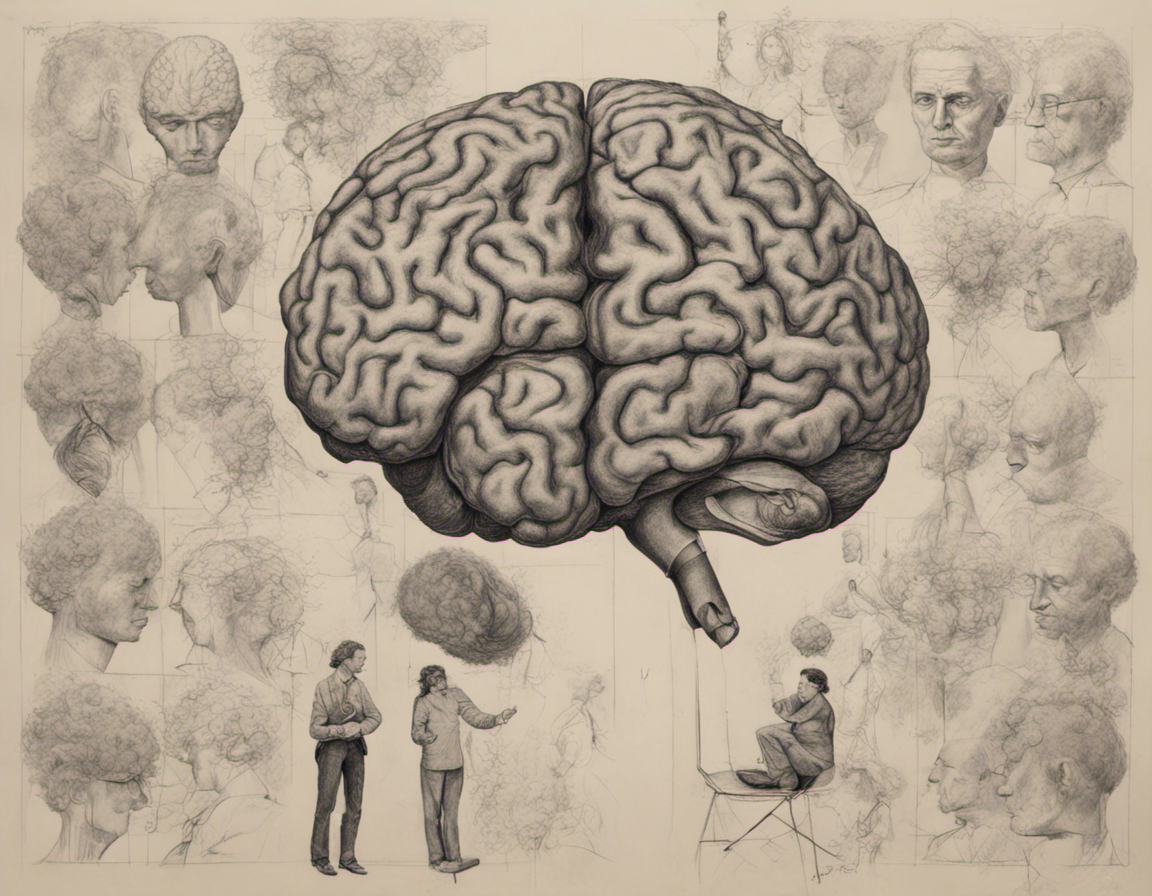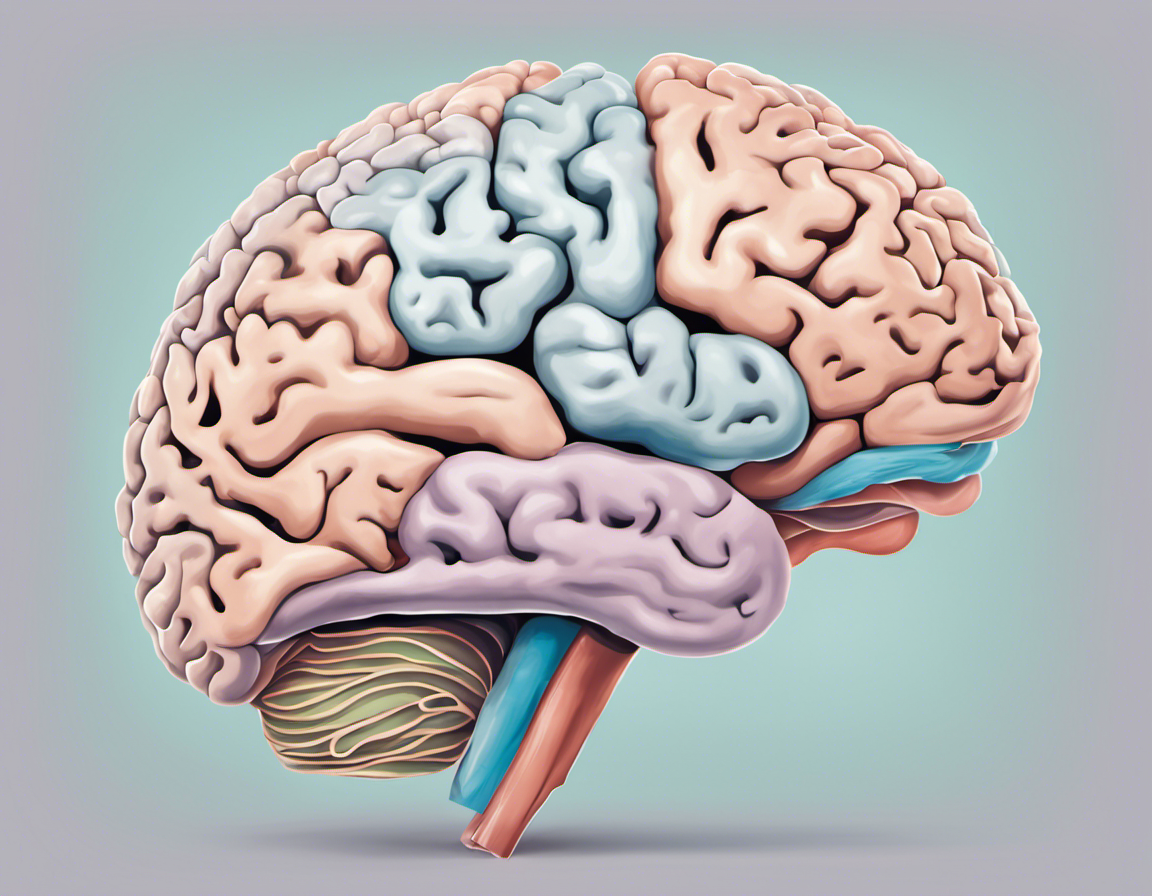Unraveling ADHD: A Closer Look at Gender Differences and Social Dynamics

Imagine a world where a race is starting, but not everyone gets to start at the same line. Some are held back by invisible chains of societal perception, cultural norms, and unjust stereotypes. The competitors? Millions across the globe are diagnosed with ADHD – Attention Deficit Hyperactivity Disorder. A peculiar and powerful disorder that challenges traditional notions of behavior and cognitive capacity.
While ADHD isn’t selectively challenging, it presents differently among genders due to physiological and societal factors – offering unique hurdles for each sex to conquer. Boys could be stereotyped as the “usual suspects,” while girls might fly under the diagnostic radar – an imbalance that bears significant consequences for their future well-being.
This article aims to shed light on the lesser-discussed dynamic: unraveling ADHD through the lens of gender differences and social dynamics. It’s not just a question of ‘how many?’ but of ‘how differently?’, ‘how severely?’, and most importantly, ‘How can we adjust our support mechanisms?’ As you journey through this article, you’ll be supplied with crucial insights into ADHD’s manifestation in different genders and the implications thereof, right from childhood into adulthood.
Drawing on a wealth of research studies and anecdotal evidence, we shall deconstruct persisting myths and misconceptions about ADHD. Along the way, we consider how societal perceptions and cultural norms feed these disparities in diagnosis and support. While listening to the stories of those who’ve walked this road can offer solace and hope, it can also arm society with the necessary knowledge to enact change.
Shining a light on these disparities is not simply about equity or fairness – it’s about fostering a greater understanding of ADHD holistically. It’s about restructuring our approach towards ADHD – broadening diagnostic criteria, tailoring treatment strategies for each gender, adjusting educational initiatives, updating legal systems, and, more importantly, altering personal attitudes.
So whether you’re someone living with ADHD, a loved one trying to understand and support, or simply a curious reader – welcome. Let’s unravel the intricate and significant intersection of ADHD, gender, and society together.
Brief Explanation of ADHD
Attention-Deficit/Hyperactivity Disorder (ADHD) is a neurodevelopmental condition that impacts millions of individuals across the globe. This disorder is commonly characterized by enduring patterns of inattention, hyperactivity, and impulsivity, which interfere with daily functioning or development. It is frequently diagnosed during childhood but can persist into adulthood, often manifesting differently across different life stages and genders.
Importance of Understanding ADHD and Gender Differences
The interaction between ADHD symptoms and gender is a critical aspect that warrants attention. Understanding these differences is vital for accurate diagnosis, managing symptoms, creating effective treatment strategies, and promoting better quality of life. A clear comprehension also aids in debunking societal myths and misconceptions about ADHD, enhancing overall awareness about the disorder.
Overview of Research and Statistics
Research indicates a prevailing gender disparity in ADHD diagnoses. For instance, boys are three times more likely to be diagnosed than girls. However, this figure might not present a comprehensive picture since data suggest that girls with ADHD often remain unidentified due to their different symptom presentation.
ADHD Presentation in Boys and Girls
Boys diagnosed with ADHD often exhibit distinct hyperactivity and impulsive behaviors, which makes them more noticeable and likely to get diagnosed. On the contrary, girls with ADHD frequently show signs of inattentiveness rather than hyperactivity – often overlooked markers. Consequently, many girls may not receive an ADHD diagnosis until later.
Long-Term Consequences of ADHD
Left untreated, ADHD can extend into adulthood, leading to complications like mental health disorders, academic struggles, job instability, relationship issues, or lifestyle management problems.
The manifestation of these issues differs among men and women with distinct problem areas, such as males experiencing a higher likelihood of substance abuse while females potentially face greater challenges in maintaining social relationships.
Gender-Specific Challenges and Impact on Life
Living with undiagnosed or untreated ADHD poses significant challenges in adulthood. Women are more likely to suffer from internalizing disorders like depression or anxiety, while men might have more externalizing issues. Females with ADHD often have strained relationships and encounter problems in managing day-to-day tasks and responsibilities, whereas males might exhibit unruly behavior or poor academic output.
Review of Relevant Studies
Numerous studies lend evidence to the gender differences in ADHD symptomatology and resultant challenges. For example, the study by Quinn and Madhoo revealed that girls with ADHD were more susceptible to self-esteem issues and less likely to get timely help.
Personal Accounts and Anecdotes
Real-life stories from people living with ADHD also attest to the gender-specific challenges. Alice, a lady who was diagnosed at 35, shares her journey of overlooked childhood symptoms, later leading to anxiety disorders. Conversely, Jack’s childhood diagnosis has led to his struggles with hyperactivity, resulting in job instability.
Strategies, Tips, and Resources
Addressing the different challenges faced by men and women with ADHD requires tailored strategies. Cognitive behavioral therapy, mindfulness practices, time-management techniques, academic accommodations, or workplace modifications based on gender-specific needs can be beneficial.
Tailored Support for Each Gender
To ensure optimal support for individuals with ADHD, it is crucial to adopt tailored approaches considering gender differences. Implementing gender-responsive interventions like counseling focusing on self-esteem for girls or behavioral therapy for boys can fortify coping mechanisms.
Caregivers, educators, and healthcare professionals need to be cognizant of these sex-specific diversities in symptoms and implications. Increased awareness is vital for improving both societal perceptions about ADHD and the life quality of those affected.
Impact of Social and Cultural Understanding on ADHD
In evaluating Attention Deficit Hyperactivity Disorder (ADHD), it is valuable to consider the various intricate societal and cultural contexts surrounding it. The social knowledge revolving around ADHD, widespread misbeliefs, and the cultural repercussions often complicate the accurate interpretation of symptoms and diagnosis.
Societal Perception of ADHD in Different Genders
Societal perception plays a vital role in the diagnosis and management of ADHD. The disparities in how symptoms get interpreted among different genders are significant. Typically, society perceives boys with ADHD as restless, lacking focus, and disruptive, fitting the standard symptom description. Conversely, girls diagnosed with ADHD might present primarily inattentiveness rather than hyperactivity, frequently leading to delayed or missed diagnosis due to differences in manifestation.
Research polls suggest that boys garner ADHD diagnoses three times more frequently than girls. This discrepancy illustrates society’s predisposed gendered perception of how ADHD manifests, hampering girls from receiving well-timed diagnosis and treatment, thus potentially affecting their quality of life adversely.
Cultural Norms and ADHD
Cultural expectations and norms also influence how people perceive and interpret ADHD symptoms. Across many societies, behaviors exhibited by people with ADHD come under scrutiny due to misunderstanding or stringent cultural norms that disapprove of ‘deviant’ conduct. This framework compels individuals with ADHD to face prejudice and ostracization due to a lack of accommodating attitudes towards varied behavioral patterns.
In some societies, there’s a considerable acceptance of active behavior among boys, leading to an oversight of hyperactive manifestations that might denote ADHD; meanwhile, in girls, the same characteristics might be condemned considering societal gender norms. Strict societal regulations around gender roles unwittingly contribute to delayed diagnoses or even misdiagnoses.
Effect of Negative Stereotypes on ADHD Diagnosis
The existence of negative stereotypes regarding ADHD deters apt identification and treatment. Stereotypes such as ‘ADHD affects solely children’ or ‘People with ADHD are merely being lazy’ paint a prejudiced picture and establish misapprehension among individuals about the disorder. These myths produce a damaging effect, especially on adults struggling with ADHD who delay or bypass seeking help due to fear of judgment or misunderstanding.
The bias attached to ‘hyperactivity’ being more likely a trait in boys than girls reflects another stereotype that negatively influences diagnosis efficiency. Girls experiencing ADHD usually manifest symptoms differently than boys, often seeming withdrawn or daydreaming extensively instead of being overtly hyperactive.
Consequently, their symptoms are not recognized as ADHD and are belittled as traits of introversion or shyness, thereby denying them an early diagnosis. To challenge these damaging stereotypes, comprehensive education about ADHD must be promoted, fostering an inclusive understanding and effective treatment strategies tailored for each gender.
Conclusion
In conclusion, ADHD is a complex condition that interacts with gender in nuanced ways. We’ve learned that boys are disproportionately diagnosed with ADHD while girls often go unnoticed, largely due to differences in symptom manifestation. We have also delved into the long-term impacts and gender-specific hurdles that individuals with ADHD face, from mental health disorders to academic challenges and job instability.
Societal perception and cultural norms add another layer to the complexity, sometimes distorting our understanding of ADHD and its diagnosis across genders. However, with comprehensive education about ADHD, these damaging stereotypes can be challenged, yielding a more inclusive understanding of this neurodiverse condition.
We have suggested strategies such as cognitive behavioral therapy, mindfulness practices, and workplace or academic accommodations as tools for tailored support. We need increased awareness among caregivers, educators, and healthcare professionals to improve societal perceptions and, ultimately, the quality of life for those affected by ADHD.
As we move forward, let’s continue dismantling these misconceptions about ADHD. It’s time to delve deeper into research to enrich our knowledge about the gender intricacies of ADHD diagnosis and management. Only through a holistic understanding can we truly promote an inclusive society where everyone, despite their neurodiversity, feels seen, heard, and adequately supported.
Remember, every step taken toward understanding ADHD in all its breadth is a step toward a more compassionate world. This is our aim – will you join us in this endeavor?




Comments